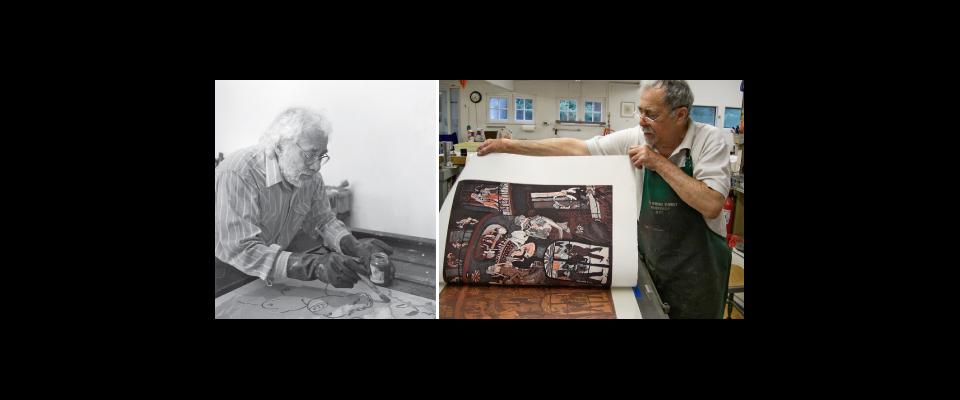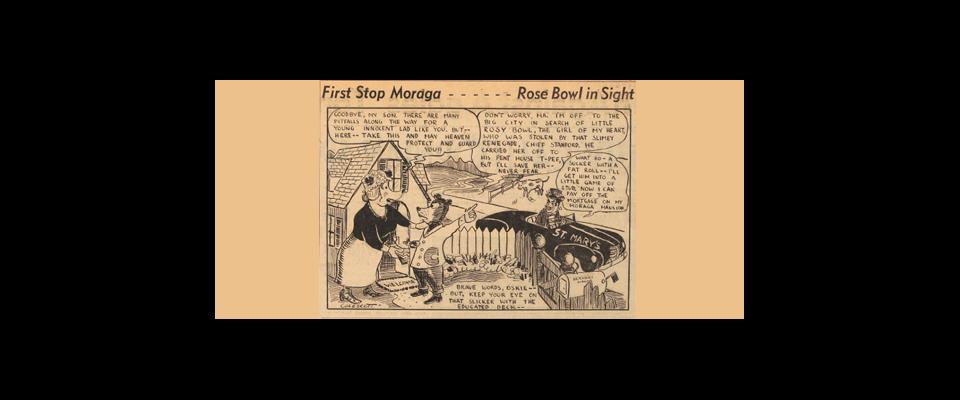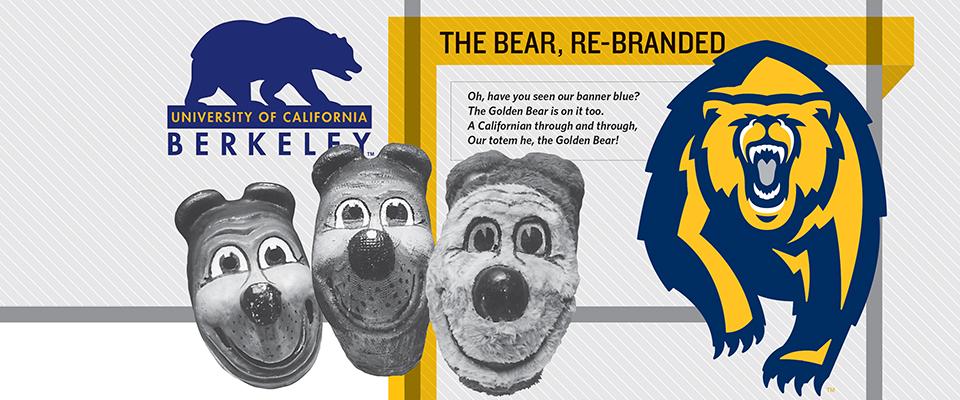The satiric visions of Robert and Warrington Colescott.
The painter Robert Colescott, who died in 2009 at age 83, is often remembered as the first African American to earn a solo exhibit in the Venice Biennale—a milestone not reached, incredibly, until 1997. In truth, Colescott was of Creole stock, mixed in race and culture. His parents, both musicians, emigrated from New Orleans to Oakland in no small part to be near the University of California. In a 1999 oral history archived at the Smithsonian Institution, Robert explained that he felt it was his duty to attend Cal. “There was no two ways about it, see.”
Eventually, both he and his older brother, the famous printmaker Warrington Colescott, completed their undergraduate degrees in fine arts at Berkeley—Warrington graduating in 1942, Robert in 1949. And both men went on to earn master’s degrees from the University, as well.
The biographies of the artist brothers are in fact remarkably parallel. Both served in the Army in World War II and both studied on the G.I. Bill. Both apprenticed in Paris. Both would eventually settle into long academic careers—Warrington at the University of Wisconsin, Robert retiring from the University of Arizona. Both married and remarried: Robert tied the knot five times, Warrington thrice. The affinities extend to their art as well: the brothers’ best works share many distinguishing characteristics, most notably the almost cartoonish figuration and the liberal appropriation (and subversion) of historical and art-historical icons.
For all their similarities, however, the brothers were not close, according to Warrington Colescott, who recently spoke to California magazine from his home in Wisconsin. The estate of Robert Colescott, when California magazine asked for permission to reproduce images of his work for this article, “declined to participate.”
A look at the brothers’ portraits shows that Robert was slightly darker-skinned than Warrington, and while Robert allowed his work to be shown in exhibitions of African-American art, his brother did not. It may seem rude to note those differences, but portrayals and perceptions of race were important themes in the Colescotts’ work, particularly Robert’s.
In one of his most famous paintings, George Washington Carver Crossing the Delaware: Page from an American History Textbook (1975), Robert Colescott recast Emanuel Leutze’s heroic scene, with the famous Black scientist taking his namesake’s place at the bow, a crew of blatant Black stereotypes decorating the gunwales. It didn’t exactly endear Robert to African-American audiences—for years, the NAACP picketed his exhibitions—or for that matter, to White audiences, who, in the artist’s own interpretation, “felt guilty because their people had created these images.”
At times, Warrington’s work could touch the same nerve. In a 1967 print, The Great Society: Inner Core, inspired by the Milwaukee race riots of that year, a corpulent cop, truncheon ready, comes to the rescue of a nearly nude white woman seemingly enslaved by a black man. What was meant to satirize white fears was taken by many to simply reinforce racial stereotypes.
Warrington said he felt himself to be “caught in the middle of the cross that the country has to bear from its history. I sometimes feel it’s a strength and at other times it’s a pain in the ass.”
As irreverent as Warrington’s work can be, it also exhibits a kind of giddy playfulness. In a trio of etchings entitled Lincoln at Ford’s Theatre from the early 1970s, Warrington imagined President Lincoln enjoying a burlesque show when his assassin—a cow—leveled a pistol at his head. Commenting on the work in Mary Weaver Chapin’s The Prints of Warrington Colescott, Catalogue Raisonné, 1948–2008, the artist said he was “revisiting attitudes that I had worked with back in my undergraduate days. Why not? American history has been a short-lived bloody business and, with a few exceptions, deserves to be played for laughs.” As for the bovine assassin, Colescott wrote in his studio book: “Why would a cow shoot the President? Was there something unseemly in the agriculture bill that he had just signed? Was there a movement in the herd to replace forty acres and a mule with forty acres and a … cow?”
To be sure, both Colescotts played their material for laughs, and the humor was often hard-edged. Still, Warrington considers his work to be lighter and more ambiguous than his brother’s. “He’s a very good painter,” Warrington said, still speaking of Robert in the present tense, “and he’s much rougher than I am…. He’s an attack artist … I don’t think I’m that narrow. Sometimes I feel good, I make somebody happy. But I enjoy the attack as well.” In his own work, Warrington said, he is trying to address real issues while “staying a click or two away and not just promoting one thing or the other, letting the person looking at the art make the judgement call.”
As for Robert’s brand of satire, Berkeley art historian Peter Selz observed, “He comes on like the Lenny Bruce of painting.” That not everyone got the jokes could be exasperating for him. “It’s satire,” Robert Colescott insisted in the Smithsonian interview, sounding a note of impatience. He added: “It’s the satire that kills the serpent, you know.”





















